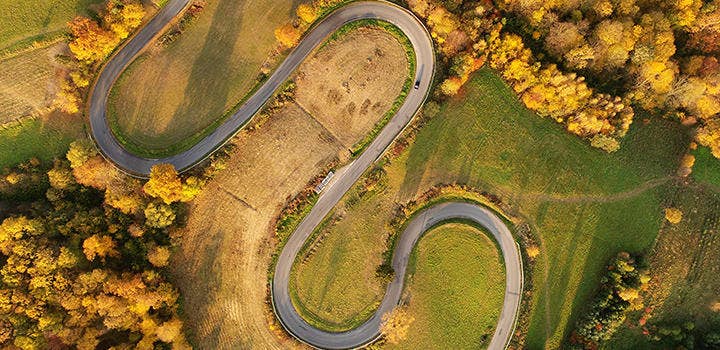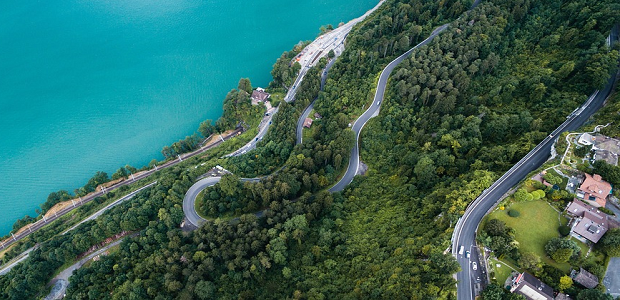Work with a Trusted Aerial Photographer Spokane for Spectacular Views
Work with a Trusted Aerial Photographer Spokane for Spectacular Views
Blog Article
Transform Your Viewpoint: The Art and Science Behind Drone Digital Photography
Drone digital photography stands for a substantial intersection of creative vision and technical advancement, enabling creators to capture point of views formerly unattainable. Recognizing the auto mechanics of drone technology, from tools selections to structure methods, is essential for achieving engaging images (aerial photographer spokane). What really distinguishes effective drone digital photography from mere aerial pictures?
Recognizing Drone Modern Technology
Comprehending drone innovation is important for anybody interested in harnessing its abilities for digital photography. Drones, or unmanned airborne cars (UAVs), rely upon a combination of software and hardware to accomplish trip and capture imagery. At their core, these tools are furnished with sensors, cams, and navigating systems that allow them to fly autonomously or be controlled remotely.
The main components of drone technology consist of the trip controller, which functions as the brain of the drone, refining data from various sensors to make certain steady flight. In addition, general practitioner technology plays a critical role in navigating, allowing drones to follow pre-defined flight courses and preserve their placement also in challenging problems.

Furthermore, recognizing the governing landscape surrounding drone use is essential, as it controls where and just how drones can be operated, making sure security and conformity. Experience with these facets of drone modern technology equips digital photographers to optimize their innovative capacity while sticking to lawful guidelines.
Necessary Tools for Drone Photography
Choosing the ideal tools is vital for achieving outstanding lead to drone digital photography. At the heart of this configuration is the drone itself, which need to be selected based upon flight stability, video camera top quality, and convenience of use. Popular models often include integrated high-def electronic cameras that capture stunning aerial photos.
Along with the drone, buying a top quality electronic camera is necessary. Many drones come furnished with cams qualified of shooting in 4K resolution, however, for professional-grade results, take into consideration a drone that permits interchangeable electronic cameras or sustains larger sensors. This flexibility can significantly improve image top quality.
Stablizing is another vital component. A three-axis gimbal is suggested for smooth footage, minimizing vibrations that can interfere with photo clearness. Moreover, extra batteries and a trusted battery charger ensure extended flight time, enabling more thorough shoots.
Mastering Make-up Strategies
Understanding composition strategies is essential to raising your drone photography from common to extraordinary. A well-composed photo catches the visitor's attention and shares an effective narrative.
One of the vital concepts to take into consideration is the rule of thirds, which involves separating your frame into a grid of 9 equal parts. Positioning crucial elements along these lines or at their intersections creates aesthetic interest and equilibrium. Additionally, leading lines can assist the audience's eye via the picture, accentuating the subject and including deepness.
An additional reliable method is framing, where natural components such as trees or buildings enclose the subject, boosting the prime focus. This approach not only gives context but likewise creates a feeling of affection within the scene.

Lastly, always be mindful of the horizon line. A jagged perspective can distract and take away from an otherwise exciting image. By grasping these make-up techniques, you can dramatically boost the influence of your drone photography.
Illumination and Weather Condition Considerations
In drone photography, the interaction of lights and weather condition can considerably affect the quality and mood of your images. Optimum illumination conditions are important; the golden hours-- soon after sunrise and before sundown-- provide soft, diffused light that enhances shades and lessens harsh shadows. During these times, the landscape appears more vibrant and dynamic, enabling for awesome airborne shots.
Alternatively, overcast skies can create a level, muted palette, yet they can additionally give even lighting that lowers comparison and highlights details in the atmosphere. This can be useful for capturing textures in city settings or intricate patterns in nature.
Weather problems, such as haze, snow, or rain, can additionally add one-of-a-kind components to your digital photography. Fog can create a sense of mystery, while rainfall can enhance shades and saturate the landscape. It is important to think about the safety and security of your drone; flying in damaging weather condition problems can lead to devices damage or loss of control.
Inevitably, recognizing just how illumination and weather condition impact your airborne shots allows you to choose the perfect conditions for your drone photography, ensuring engaging and visually striking images.
Post-Processing Idea
After recording magnificent aerial pictures, useful content the following step entails refining those shots through post-processing. This crucial stage improves the aesthetic impact of your photos, enabling you to highlight the one-of-a-kind viewpoints that drones give.
Begin with software tools like Adobe Lightroom or Photoshop, which supply durable editing and enhancing abilities. click resources Begin by remedying exposure and white balance to ensure that your colors appear true to life. Make use of histogram checks to attain optimum illumination degrees, avoiding too much exposure or loss of detail in darkness.
Next, improve comparison to add deepness to your photos. Adjusting quality can develop crucial details without presenting sound, which is especially helpful in airborne shots where appearance plays a significant role. Don't avoid chopping; this can aid focus the viewer's interest on the main topic.
Shade grading is an additional powerful tool. Experiment with saturation and vibrance to make the landscape pop, yet use these adjustments sensibly to preserve a natural look. Ultimately, consider applying a slight vignette to lead the visitor's eye toward the center of the image. By understanding these post-processing strategies, you can raise your drone digital photography to brand-new elevations.
Conclusion

What absolutely distinguishes efficient drone photography from plain aerial snapshots? Numerous drones come equipped with cameras capable of shooting in 4K resolution, however for professional-grade outcomes, think about a drone that allows for compatible video cameras or sustains larger address sensing units. By grasping these make-up methods, you can significantly boost the effect of your drone digital photography.
In drone photography, the interplay of illumination and climate can substantially affect the top quality and mood of your photos (real estate drone photographer). By grasping these post-processing strategies, you can raise your drone photography to new elevations
Report this page